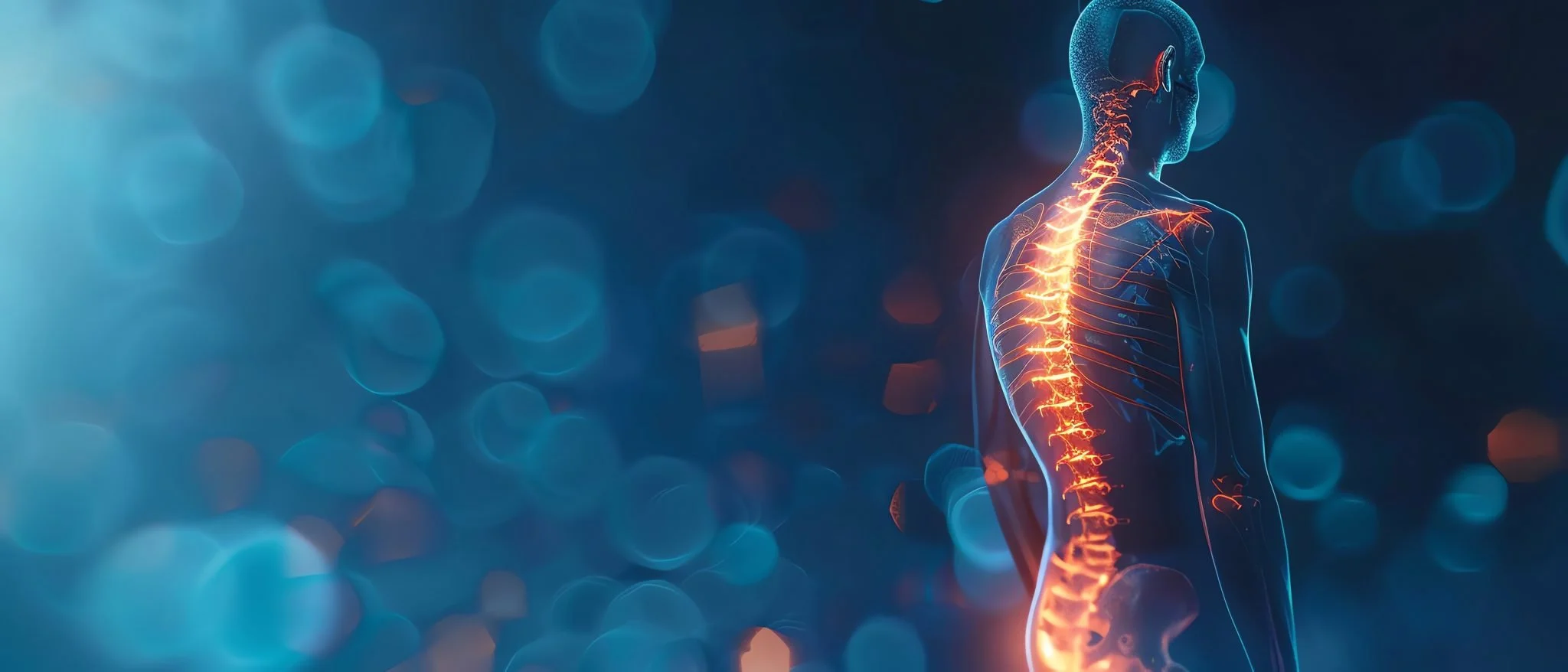
About Chronic Pain
Chronic pain and symptoms are your brain’s opinion of how much danger you are in. The good news is that you can change that opinion and get the body, brain, and nervous system back on track.
You Are Not Alone
It goes by many names: Mindbody Syndrome, Neuroplastic pain, Neural circuit pain, Tension Myositis Syndrome, Stress disorder, Central sensitization and Psychosomatic pain — they all mean the same thing: that it is the brain and the nervous system together creating chronic symptoms without damage to the body.
Most chronic pain and symptoms are poorly understood by the medical community. It’s not their fault; the area is not properly studied in medical school.
The mainstream medical protocol says that chronic pain and symptoms are created by damage to the body. But modern pain science shows us that this simply isn’t true.
There Is A Way Out
Many chronic pain and symptoms can be reversed with a pen and a piece of paper, in a short period of time, with work you will do yourself.

Chronic Pain and The Brain
The brain is brilliant, but sometimes it can get things wrong.
Pain is a beautiful tool by the brain that is designed to protect you from both emotional and physical threats. The brain sends pain to stop you from running on a broken ankle, but it will also send pain when there is a situation or experience that it perceives as emotionally painful. Emotional threat and physical threat are registered and processed in the same part of the brain. This part of the brain is primitive; it only knows to look at an incoming stimulus and decide “dangerous” or “not dangerous”. So, sometimes when we experience an emotional feeling (small or large) that is uncomfortable, the brain and nervous system interpret it as “dangerous” and send pain. Your brain literally doesn’t know the difference between a physical threat and an emotional threat, so it sends pain to get your attention and react.
The perceived threats run below the surface of our consciousness without our knowledge or permission, and create alarm in the body. Mainstream medicine is only just beginning to recognize the role of the brain and emotions in the development of chronic pain and other chronic symptoms.
“If your pain is not structural, tissue damage, cancer, or certain autoimmune conditions, there is a good chance (90-95%) that it is mind-body related, and you can be free with a bit of work.”

Neuroplastic Pain/Mindbody Syndrome
The basic principles of Mindbody Syndrome (MBS)
We live in a mind-body system. The old medical model of treating the brain and the body separately is outdated. They are 100% connected. Have you blushed when embarrassed? Cried when sad? That is your mental/emotional state creating a response in the body. The mind-body connection.
MBS is the umbrella name under which thousands of chronic pain symptoms fall: pain or symptoms that have persisted longer than 3 months, and are not cancer, tissue deterioration, or purely structural. Autoimmune disorders are not necessarily caused by MBS, but their symptoms can be eradicated by this work.
Pain is a threat response to a perceived danger. It is a warning or signal that something is amiss and needs your attention. We now know that with 90– 95% of chronic pain and symptoms, the threat signal is not coming from physical damage to the body, but from a perceived threat in our emotional and psychological world. After all, the part of the brain that processes danger or threat doesn’t perceive the difference between physical threat and emotional threat.
These emotional dangers come from one of 5 different areas:
childhood adversity
unexpressed/repressed emotions
daily stressors
personality traits/characteristics
learned neural pathways.
“It’s all about taking the pressure off our nervous system.”
History of Mindbody Syndrome – Dr John Sarno
Dr. John Sarno was a medical doctor at the Rusk Institute in New York, who discovered this syndrome in the 1970s. His patients with back pain weren’t improving with surgery. He also found, after treating thousands of people, that all of his back pain sufferers shared at least one of four things in common:
Childhood trauma
Certain personality types (type “T” personality)
Unexpressed/repressed emotions
A great deal of daily stress (e.g. stressful job, relationships, divorce, new parent, death in the family, money problems, etc.)
He called this syndrome Tension Myositis Syndrome or TMS (later Tension Myoneural Syndrome), and dedicated his life to helping TMS sufferers. This area is now being studied intensely. Sarno’s ideas have been developed further, but he is the godfather of this syndrome, and the basic facts that he uncovered in the 70s and 80s still ring true today.
“Neuroplastic pain is learned pain, and we can learn pain through many avenues: fear, repetition, preoccupation, anxiety and a dysregulated nervous system. Eventually, a pain can become learned and take on a life of its own.”
Understanding the brain and the nervous system
First and foremost, understand that your body is not working against you, nor is it out to get you. Your body is in perfect working order. It’s actually trying to protect you. Your nervous system’s #1 job is to keep you alive. It can send you pain to prevent further damage, like running on a broken ankle, but it can also send you pain and symptoms to prevent you from addressing/feeling something painful in your emotional world. Your brain and nervous system have decided that the emotional ‘threat’ is more dangerous to your survival than the pain, so the pain becomes a warning, and a foil; a way to distract you from looking at/perceiving or addressing the emotion. This emotion is most likely not conscious, and it doesn’t have to be big T trauma...but it’s there bubbling away below the surface.
When the brain and nervous system try to repress emotions (survival instinct), this sends our whole system into the fight/flight/freeze/fawn response. The nervous system becomes dysregulated and often hypervigilant.
The brain is brilliant, but it’s not foolproof and together with the nervous system, it will always prioritize safety and survival. Pain is information with strong stimulation. It’s a message that is designed to keep us alive.
Thousands of people free themselves from chronic pain by recognizing this one fact: there is nothing wrong with your body. No damage. Start thinking psychologically, not physically.
“Your repressed emotional world is seen as a greater predator to your safety than the pain. You don’t get to decide this....your brain and nervous system do. But you can be free.”

Summary So Far
Summary
The brain and nervous system don’t recognize the difference between physical danger and emotional danger, so when they read “emotional threats” to our survival (ie hating your job, dinner with inlaws, repressed emotions that might involve anger, rage, shame, fear, sadness, grief, loss), the brain and the nervous system do one of two things to protect us:
They see these incoming “scary” life-threatening emotions and memories as a direct danger to our survival and send pain to warn us (like the hand on the hot stove)
They create a distraction pain to draw our attention away from the rising emotion and/or memories.
In Sarno’s methodology, the whole purpose of the pain is a defense against powerful emotions in the unconscious that we don’t want to look at. These emotions naturally want to come to the surface, but are being repressed by the nervous system as they are seen as too emotionally painful in nature.
Symptoms are born. The bottom line: the nervous system thinks you can’t handle these emotions. The brain and nervous system see these dangerous surfacing feelings, memories, beliefs, etc., as a greater predator to your survival than back pain/ sciatica/ migraines/ IBS/ carpal tunnel/ high blood pressure/ anxiety/ OCD, etc... so they deliver pain to warn you and draw your attention away, so as not to allow these feelings and emotions to come up to your awareness, where you would have to deal with them. Primitive brain. Survival. Not logical and not rational.
A helpful hint…
We are looking for conflict within. Unexpressed emotions. Self-induced pressure. When we feel two ways about something. Push-pull, black-white, love-hate. Think resistance. Inner turmoil.
A good analogy is a pot of boiling water. The water is emotions, feelings, memories, and painful beliefs that we’ve been stuffing down (often for decades). Simple stuff (your dad made a fool of you on the football field in grade 10), to heavy things like sexual or emotional abuse and neglect. We bury these feelings to get along. To survive. We can’t go around yelling at people and falling apart emotionally every time we are angry, or ashamed, or scared, or feel grief, sadness, or rage.
Over time, that pot of water starts to overflow with all the unexpressed emotions you’ve been putting in there (family, work, childhood trauma, perfectionism). It has to go somewhere; it is energy that has to escape, and your body and nervous system either read them as danger signals (hand on the hot stove) or they do not think it’s safe for you to feel these feelings, so they come out in your body as chronic symptoms.
Your big, beautiful, and incredibly complex brain thinks it is coming to your rescue. Please love it for that. It cares about your survival probably more than even you do.
An Example
Susan is a mother of three. She’s having a hard time coping with the kids while her husband is at work. She’s doing her best on the outside but every time the kids act up her migraines kick in and her sciatica is crippling. She dreamed of being a mother and she adores her kids, but secretly she feels massive rage and resentment at them (and her husband) and the demands that they are putting on her. Now, society says you are a horrible mother and a wretched human if you hold anything but absolute love and adoration for your kids, so the inner conflict and strong emotions bubbling underneath the surface are completely unacceptable. Her brain and nervous system are trying to protect Susan from these “dangerous” and “scary” feelings that are trying to make their way to the surface, so they create migraines and sciatica to distract her from seeing these emotions. Pain is a foil. Protective measure. Survival instinct.
“Most chronic pain and symptoms are coming from a dysregulated nervous system mistakenly reading danger signals.”
“Pain is just a protective message with strong stimulation in order to get your attention. Once you address the message, you get free.”
“Your brain and nervous system’s #1 job is to keep you alive. When a ‘scary’ or unmanageable emotion or memory comes up in your conscious mind, if your nervous system decides it’s too painful, it will give you pain to warn you and distract you.”

The Science
Pain is not your body working against you. It’s a learning signal for guiding behaviour.
Pain science and research now show us that chronic pain and symptoms rarely have a physical cause (90–95%). Don’t get me wrong, the problem is showing up in your body, but the root cause is more psychologically and emotionally based than mainstream medicine ever thought.
All pain is created in the brain. When you put your hand on a hot stove, it’s your brain (not the heat) that causes you to pull your hand away automatically. A split-second response from the brain sends the message to pull it away because it reads, “this isn’t safe... damage ahead.” That’s the physical cause of pain. There is also an emotional cause of this response, science had not discovered it yet..
The good news is that if the brain can turn on this pain signal, it can turn it off, too. We can address the emotional causes and retrain the brain to recognize that it is safe. It’s called neuroplasticity, and any brain can do it, at any age, no matter how long you have had symptoms. We can unlearn erroneous pain signals as easily as we learned them.
When symptoms last longer than three months and are not attributed to structural cancer or tissue damage, it’s often because the problem lies in the messaging from the brain and nervous system. This isn’t opinion... It’s science. If the pain is persistent, chances are it’s about the wiring and not the body.
The latest discovery in pain science is that we can have pain and symptoms without any physical damage or stimuli. This is a revolutionary finding and creates a paradigm shift in how we look at and treat chronic pain and symptoms.
“People recover in 4 ways:
1) knowing that nothing wrong
2) emotional processing
3) brain retraining
4) working through stressful moments and understanding what is going on.”
Conditioned Neural pathways; the final key in the lock of MBS
I’ve talked about the emotional and psychological causes of MBS, but there is a very important final piece that brings this all together: the conditioned or learned neural pathways. This is biology, and it can keep the pain alive in a number of ways.
Once a pain signal has been firing repeatedly for a while, two things happen:
Pain signals in the body become sensitized to the signal, creating a new neural pathway and an automatically conditioned response.
We start to build a story and meaning around the pain, creating a fear/ pain loop.
When you have struggled with pain or symptoms for a while, your relationship with the pain creates a whole new experience. You start working hard to get rid of the pain. It takes up a lot of your time and energy. You obsess about the pain... become preoccupied with the 6Fs: fear, fight, focus, frustration, fixing, and figuring it out.
When is it going to go away?
Why is it back?
What’s going on in my body?
Will I ever run again?
Should I go to the physio?
Is it my diet?
Why has the pain moved to another part of my body?
The intensity, focus, and story we create regarding the pain start exacerbating it because it is being read as a danger signal by the brain and nervous system. We start to get scared and hyper vigilant of the symptoms, and the brain and nervous system see this as a threat. When you learn to ride a bike, it eventually just becomes automatic. The same can happen with pain and symptoms. They cut new neural pathways that take on a life of their own as a learned response by the brain and nervous system.
“Don’t look at the symptoms as the cause. Look at what is going on in your life.”
“Recovery from chronic pain and symptoms comes down to two areas of focus: Current and past stressors, and learned neural pathways. Address these, and you will most likely be free.”

The Work
The goal in the work is to reverse the danger signals. How do we do that?
Ultimately, we work on two areas:
Current and past stressors
Retraining the brain
The work is simple, but it’s not always easy. There is an answer to every question and a reason for every symptom.
Becoming pain or symptom-free can involve a few actions, and everyone is different. Some clients have recovered as soon as they understood that this pain was misfiring circuits in the brain and that there was nothing physically wrong, and some people need a little more assistance. That’s why I am here.
The targets we are working towards:
Reversing misinterpreted danger signals and getting the brain and nervous system to a place of safety.
Creating a regulated nervous system from a dysregulated one.
Retraining the neural circuits to stop reading danger where there isn’t any.
Addressing any past or current stressors that are causing the brain and nervous system to feel unsafe.
Education and knowledge about the syndrome and why you have it.
Work with and address the 6Fs: fight, figure out, fix, frustration, fear, and focus.
Learning tools and techniques to help you overcome symptoms and prevent them from returning.
Finding a new relationship with self.
Troubleshooting pain and flares.
There are four cornerstones to being free from chronic pain and symptoms:
Education and knowledge about what you are dealing with.
Recognizing where you are in this cycle.
Doing the work.
Learning to work with this new knowledge to stay symptom-free.
You and I will go through this in our work together.
“We are not trying to get rid of the pain; we are reversing the danger signals. We are taking the nervous system to a place of safety.”
“Look for the RESISTANCE or CONFLICT within you. What are you unconsciously fighting? Not wanting to look at or deal with? When you feel two ways about something, your nervous system creates resistance. Pushpull. I love you/ I hate you. I’m fine/I’m not fine.”
Work With Me
The work we do together is based on cutting-edge research and science.
I use evidence-based tools and therapies that are designed to work with the brain and nervous system — and ultimately remove the cause of the symptoms.
Through education and understanding, you will gain the knowledge of what is happening to you and why!
If you scroll down a bit, you can also sign up for my mailing list.















